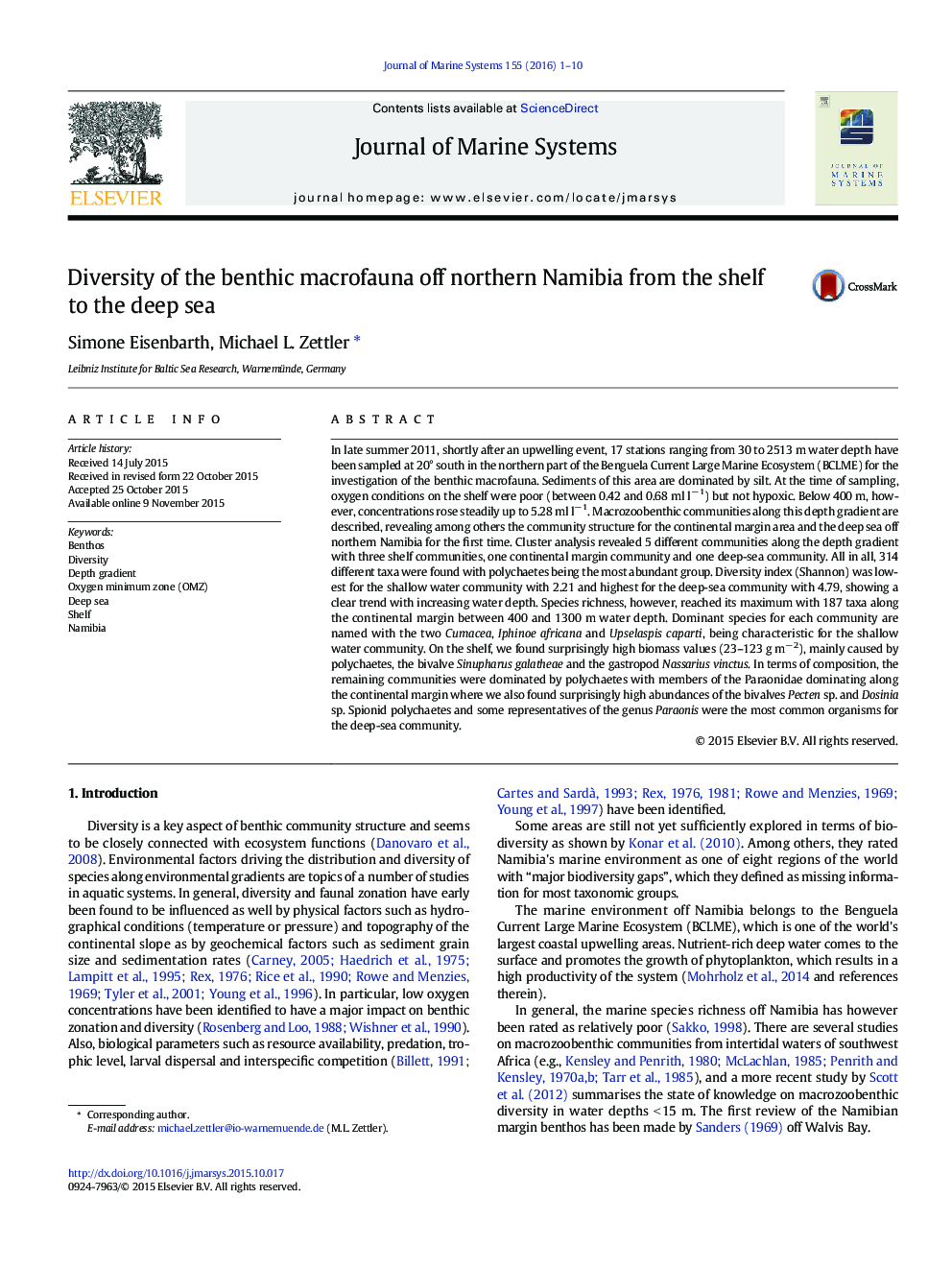| کد مقاله | کد نشریه | سال انتشار | مقاله انگلیسی | نسخه تمام متن |
|---|---|---|---|---|
| 4547937 | 1627275 | 2016 | 10 صفحه PDF | دانلود رایگان |

• Low species richness but high dominance and densities where oxygen is < 0.5 ml l− 1
• Continental margin community with highest species richness
• Two Cumacea species dominate in 30 to 123 m water depth
• Bivalve S. galatheae and gastropod N. vinctus build high biomass despite low oxygen
In late summer 2011, shortly after an upwelling event, 17 stations ranging from 30 to 2513 m water depth have been sampled at 20° south in the northern part of the Benguela Current Large Marine Ecosystem (BCLME) for the investigation of the benthic macrofauna. Sediments of this area are dominated by silt. At the time of sampling, oxygen conditions on the shelf were poor (between 0.42 and 0.68 ml l− 1) but not hypoxic. Below 400 m, however, concentrations rose steadily up to 5.28 ml l− 1. Macrozoobenthic communities along this depth gradient are described, revealing among others the community structure for the continental margin area and the deep sea off northern Namibia for the first time. Cluster analysis revealed 5 different communities along the depth gradient with three shelf communities, one continental margin community and one deep-sea community. All in all, 314 different taxa were found with polychaetes being the most abundant group. Diversity index (Shannon) was lowest for the shallow water community with 2.21 and highest for the deep-sea community with 4.79, showing a clear trend with increasing water depth. Species richness, however, reached its maximum with 187 taxa along the continental margin between 400 and 1300 m water depth. Dominant species for each community are named with the two Cumacea, Iphinoeafricana and Upselaspis caparti, being characteristic for the shallow water community. On the shelf, we found surprisingly high biomass values (23–123 g m− 2), mainly caused by polychaetes, the bivalve Sinupharus galatheae and the gastropod Nassarius vinctus. In terms of composition, the remaining communities were dominated by polychaetes with members of the Paraonidae dominating along the continental margin where we also found surprisingly high abundances of the bivalves Pecten sp. and Dosinia sp. Spionid polychaetes and some representatives of the genus Paraonis were the most common organisms for the deep-sea community.
Journal: Journal of Marine Systems - Volume 155, March 2016, Pages 1–10